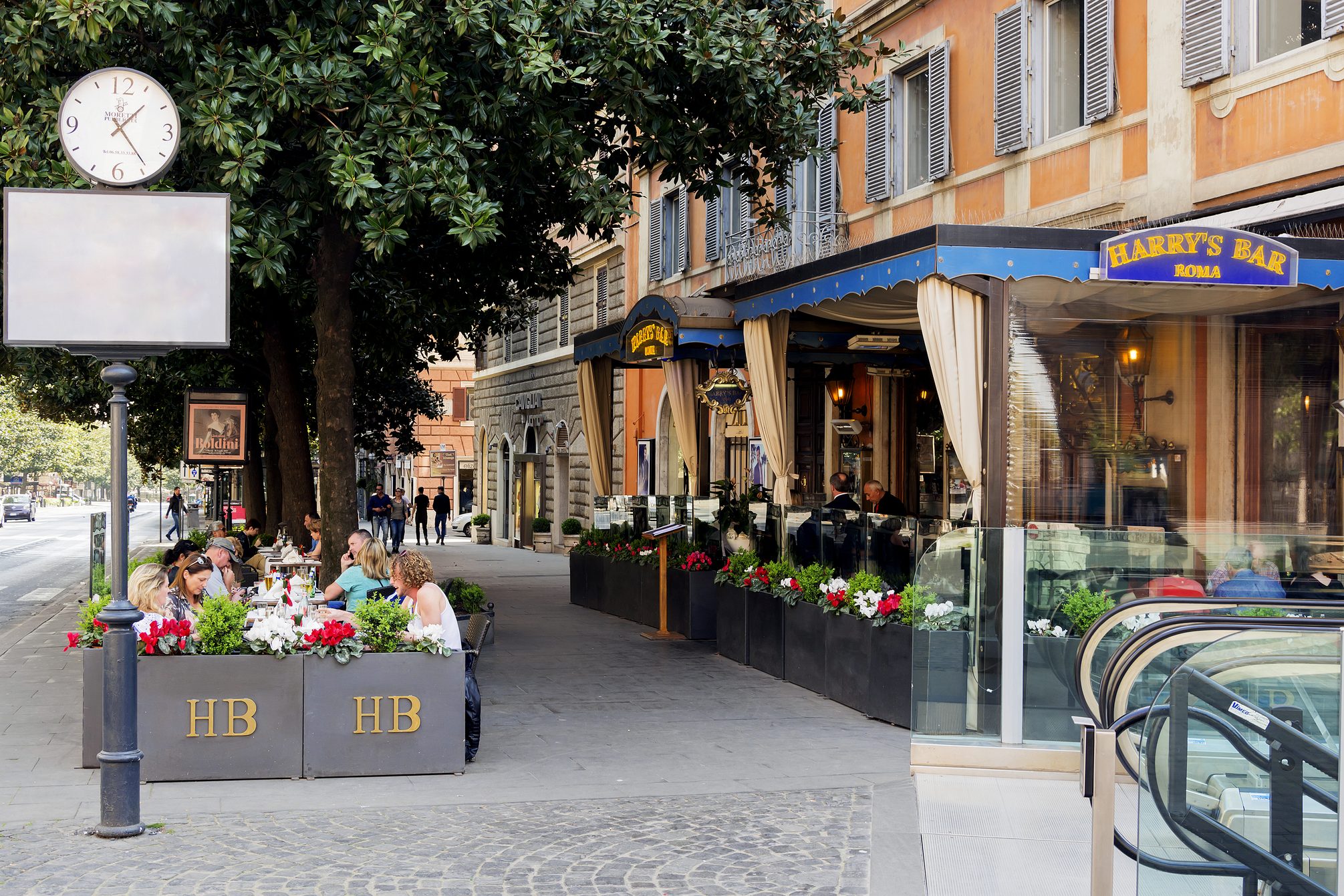Italy is always associated with pasta so I thought I’d write about one of it’s most celebrated pasta dishes which is a traditional Roman recipe, and often made incorrectly around the world. I’ll confess that for many years I was making this recipe all wrong. While I will frequently rave about my mother’s cooking and her wonderful recipes, I am sorry to say that her Carbonara recipe wasn’t at all traditional. It was good (we loved it)… but it would make any Roman screw up his nose if presented with the list of ingredients.
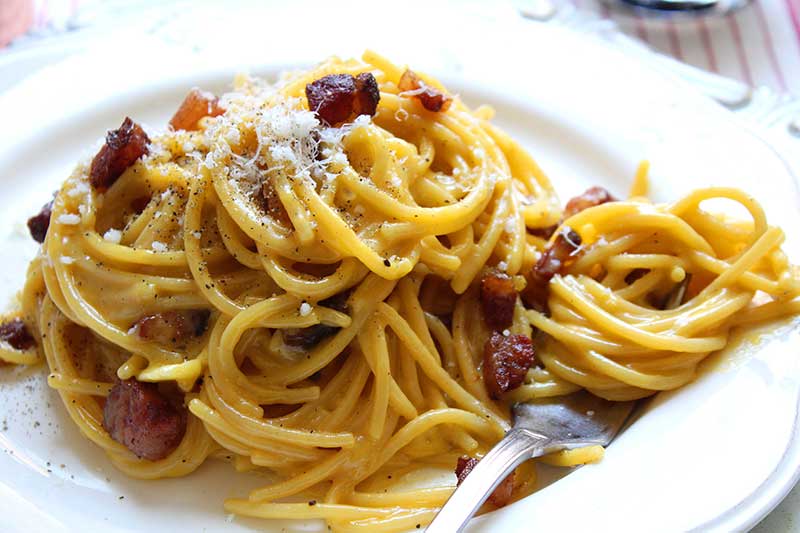
When I moved to Rome from Tuscany , I made it a priority to perfect my Carbonara recipe. I asked chefs, cooks, nonnas, friends (just about everyone actually) how they made their Carbonara, and I realised that although everyone may change the quantity of each ingredient, the fundamental ingredients don’t ever change. Variations to carbonara should never be accepted and if you do decide to add garlic, leeks, peas, mushrooms, parsley or (God forbid) cream, please give your pasta dish another name.
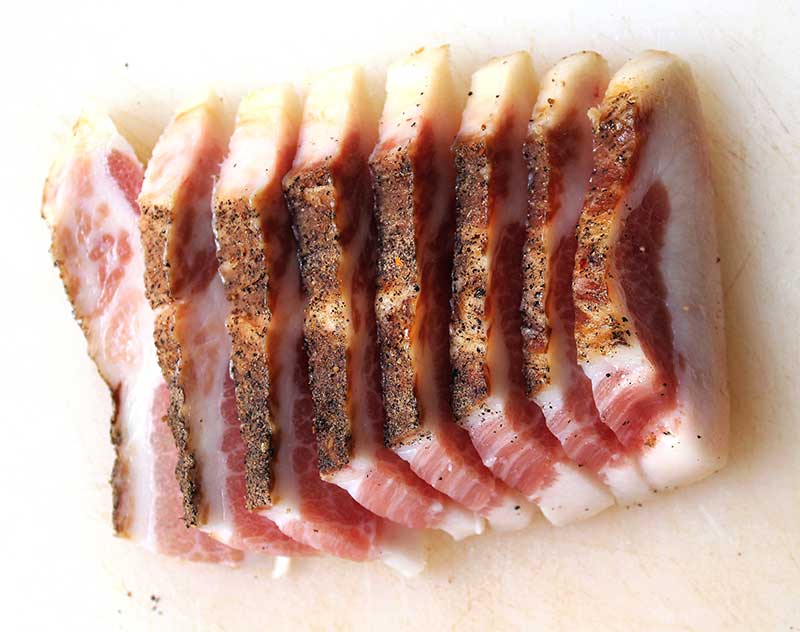
The origins of Carbonara are a little confusing and contentious with two main stories being told today. The first is that Carbonara was brought to Lazio from Umbria by coal men (carbonari), who came to sell charcoal to the Romans, and that it was made as a hearty meal for Italian charcoal workers. Interestingly though, the recipe for Carbonara can’t be found documented before WWII.
It was first written about in 1950 when it was described in an Italian newspaper as a dish prepared for the American soldiers after the liberation of Rome in 1944. Apparently many Italians were eating the eggs and bacon supplied by American troops. I have also read that British troops wanted something to eat that reminded them of their eggs and bacon breakfast and the Italians adapted these ingredients into a pasta dish.
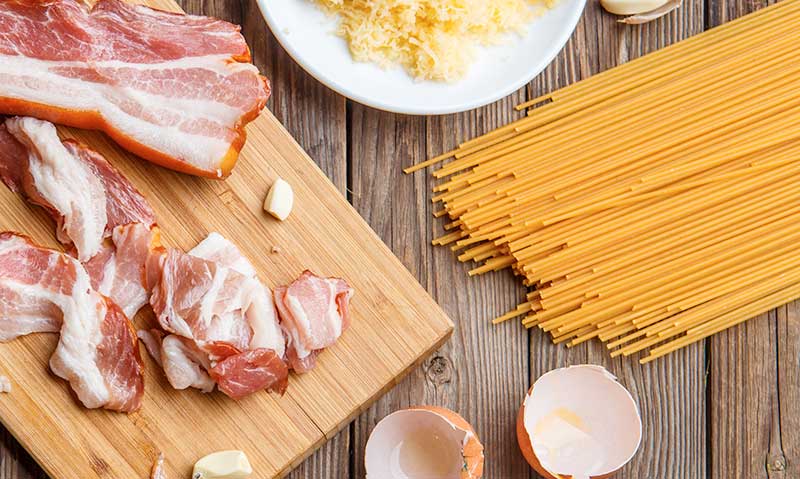
The only ingredients you will need to make an authentic spaghetti carbonara are Pecorino Romano DOP, free range eggs, guanciale, freshly cracked black pepper and a good quality spaghetti.
Pecorino Romano is a hard, salty cheese made from sheep’s milk and is one of Italy’s oldest cheeses. It has been documented being made 2,000 years ago and was given to Roman soldiers as part of their daily rations. The name derives from the word ‘pecora’ which is the Italian word for sheep. The second part of the name most probably comes from the historical origins of the cheese in Ancient Rome. Today though, Pecorino Romano is produced not only in the region of Lazio, but mostly in Sardegna and also in Tuscany.
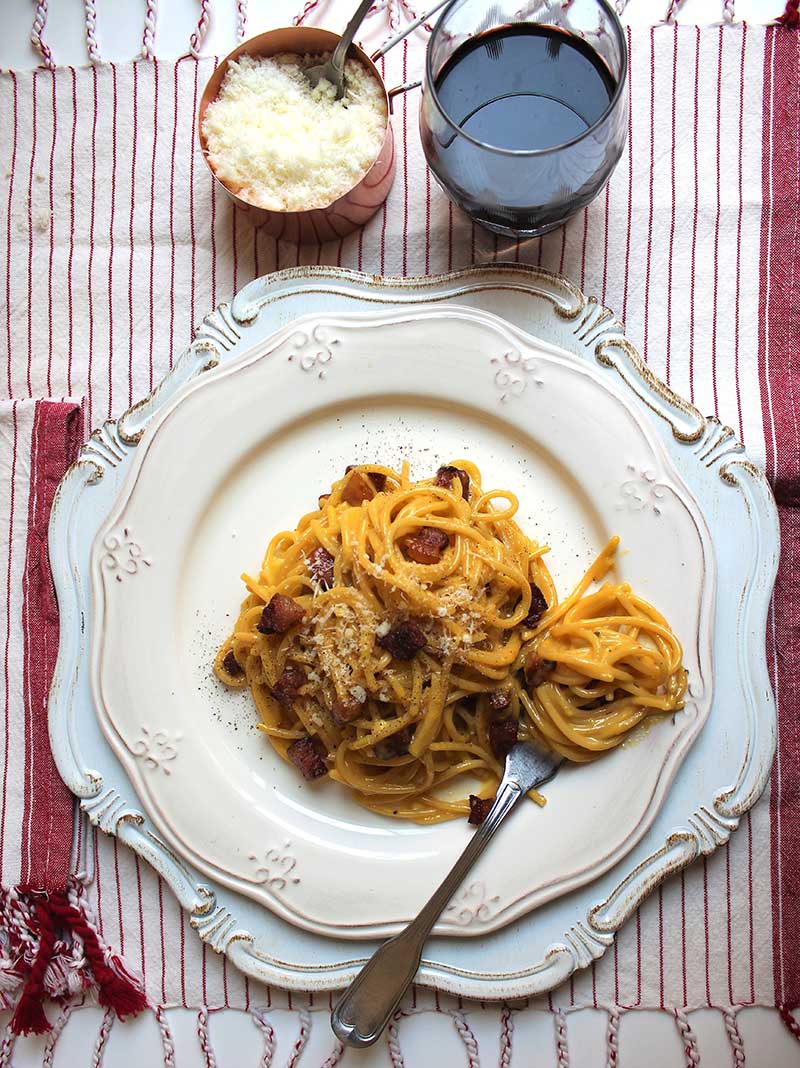
The production of Pecorino Romano moved outside the capital at the end of the 1800’s because the government decided to prohibit the salting of the cheese inside the city. Many manufacturers and shepherds moved to the surrounding regions, firstly Sardegna owing to the vast grassy fields that allowed sheep to graze. It was in 1996 that the DOP (Protected Designation of Origin) recognised the Sardinian manufacturers right to produce and aptly name their cheese ‘Pecorino Romano’.
The sharp, salty taste depends on the ageing period, which varies from five months to eight months or more. It is when it has matured for eight months that it is ready as a grating cheese, although a twelve month maturation is best for a rich, flavourful Pecorino Romano perfect for the traditional Roman pasta recipes. Do not confuse Pecorino Romano with a pecorino Toscano or pecorino Sardo. These cheeses are not very salty and are usually eaten by themselve. In the United States, you may find a ‘Romano cheese’, but this isn’t the Italian Pecorino Romano that is made in Italy and protected by the laws of the European Union. The American Romano cheese is also made from cow’s milk as opposed to sheep’s milk.
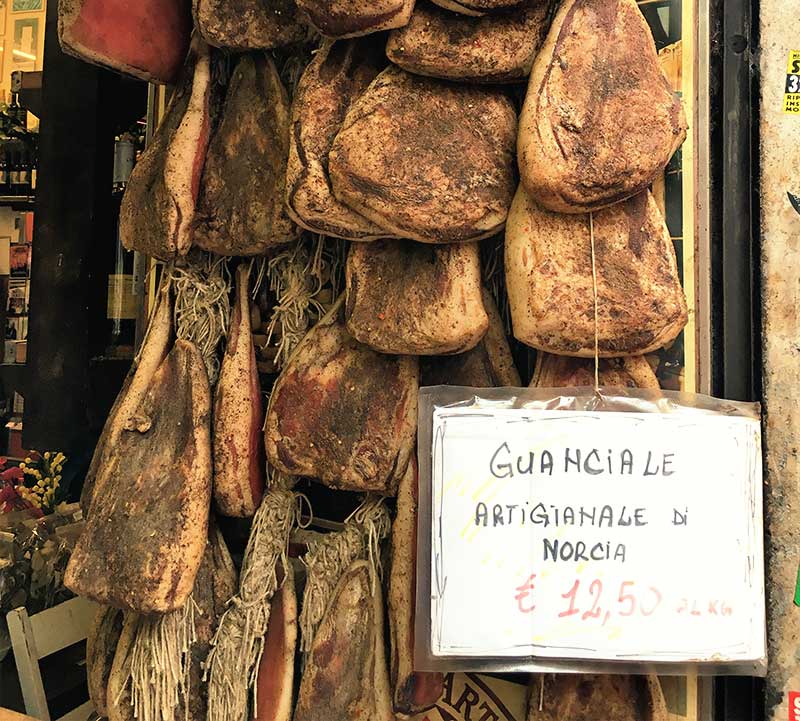
The next important ingredient for any carbonara is guanciale. The word guanciale comes from guancia, which in Italian is ‘cheek’. Guanciale is cured pork jowl or cheek. The pork cheek is rubbed with a mixture of salt, sugar and spices (black pepper, thyme and sometimes fennel). It is then cured for at least 3 months. When using guanciale in cooking, the hard pork skin is removed and some chefs also remove the side that has all the salt, peppers and spices on it.
I like to leave some of this as I feel it adds flavour to my pasta dishes. Guanciale is characterised by a thin layer of lean meat which has a thick layer either side of white fat., so it is characterised by a high fat to meat ratio. If the outer part of the fat has turned a little yellow in colour, this should be removed and not used. Guanciale is cut into cubes or pieces and is cooked in a frying pan on a low heat. The fat is rendered while the guanciale becomes golden and crispy. If you can’t find guanciale, you can use pancetta (belly) and failing that I’ll allow you to use bacon. I would strongly suggest you try to find guanciale though because the flavour is what marries so well with the Pecorino Romano to give you a genuine carbonara.
Finally, please use the freshest free-range eggs you can find, and a good quality black pepper. Use whole pepper-corns and grind the pepper only when it is required. I can’t finish without a quick mention of the pasta. Look for a dry pasta that has been pressed through a bronze extruder. This is done slowly and at low temperatures which is what gives the pasta the rough surface – perfect to soak up and retain all kinds of sauces. I suggest spending a little more to buy a good quality spaghetti. Using an important pasta makes this pasta dish anything but ordinary, and paying a little extra on a specialty brand pasta will take your recipes to a whole new professional dimension.
Making Spaghetti Carbonara isn’t difficult and I’m happy to say, that I’d be happy to make my Carbonara for any Roman without breaking out in a sweat and having an anxiety attack. I promise you that if made correctly, Spaghetti Carbonara will leave you wanting to lick the bowl and break out singing, “That’s Amore”!
Spaghetti Carbonara
(for 2 generous portions)
-
250g Spaghetti
-
200g Guanciale
-
1 egg + 2 egg yolks
-
250g finely grated Pecorino Romano Cheese
-
Black Pepper (choose a good quality Black Pepper) freshly cracked.
Directions
-
Bring a large saucepan of barely salted water to a rolling boil, add pasta and cook respecting cooking times written on the packet, cooking pasta until it is ‘al dente’.
-
Remove the thick skin from the Guanciale with a sharp knife. Remove any hard, dried parts on the side with the peppers & spices. Cut guanciale into cubes. Add to a large frying pan and fry over a low heat until it is crisp and golden. Turn off heat, and remove some of the guanciale to use as garnish later.
-
In a separate bowl, beat the egg and yolks with 200g of the freshly grated Pecorino Romano and a generous dose of cracked black pepper. It won’t be liquid, resembling more an egg and cheese paste.
-
Drain the pasta when ready and then return the cooked pasta to the saucepan. Add the guanciale and all the fat in the pan and stir well.
-
Ensuring the saucepan is away from the heat, add the egg and cheese mixture and stir vigorously. The heat from the pasta will cook the egg, and the cheese and egg mixture should become a luxurious and creamy coating for your pasta. *DO NOT stir in egg mix with saucepan over the heat otherwise it will result in a very ugly scrambled egg pasta.
-
Serve immediately with a sprinkle of freshly grated pecorino, and a little extra cracked black pepper.






